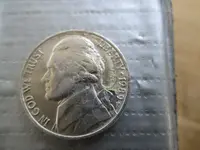port ewen ace
Silver Member
- Joined
- Dec 16, 2012
- Messages
- 4,065
- Reaction score
- 7,787
- Golden Thread
- 0
- Location
- port ewen ny
- 🏆 Honorable Mentions:
- 2
- Detector(s) used
- AT-PRO & Equinox800
- Primary Interest:
- All Treasure Hunting
Amazon Forum Fav 👍
Upvote
0






